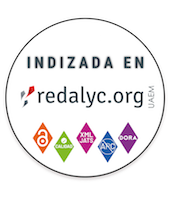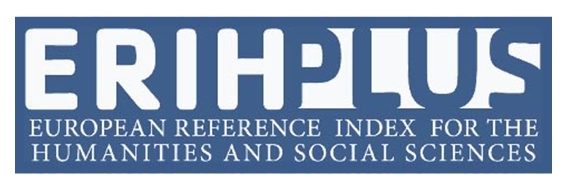Assessment of the effectiveness of a data visualization workshop in the development of graphic representation skills: Pre and post implementation comparative study
DOI:
https://doi.org/10.33010/ie_rie_rediech.v16i0.2300Keywords:
teacher skills, mathematics teachers, teaching training, graphics, visualizationAbstract
The objective of this investigation was to compare the skills related to graphic representations of information in teachers on training at the National University of Costa Rica, before and after the implementation of a data visualization workshop. A workshop on data visualization was implemented and two questionnaires were developed to collect perception information about the students’ skills in data visualization. Student perception was compared using the t-student test for paired measurements and the Wilcoxon-Pratt rank test. The analysis showed that student ratings of their graphic composition skills (p < 0.0001), graphic interpretation (p < 0.0001), optimal representation (p < 0.0001), relationship with other representations (p = 0.0004) and contextual relationship (p = 0.0003) presented significant increases after the implementation of the workshop. Significant progress was achieved in all areas evaluated after the implementation of the workshop, which indicates that the participating students acquired fundamental tools to understand, interpret and properly use statistical graphic representations in different contexts that involve a large amount of information.
References
Araujo, C. (2023). Data visualization in the Information Society. Seminars in Medical Writing and Education, 2, 25. https://doi.org/10.56294/mw202325
Arredondo, E., Vásquez, C., y García-García, J. (2021). Análisis de las tablas y los gráficos estadísticos en libros de texto de Chile y España para la educación infantil. Ridema, Revista de Investigação e Divulgação em Educação Matemática, 5(1), 1-26. https://periodicos.ufjf.br/index.php/ridema/article/view/35566/23526
Asamoah, D. (2022). Improving data visualization skills: A curriculum design. International Journal of Education and Development using Information and Communication Technology (IJEDICT), 18(1), 213-235. https://eric.ed.gov/?id=EJ1345404
Batanero, C., Garzón-Guerrero, J., y Valenzuela-Ruiz, S. (2021). Sentido gráfico y su importancia en la comprensión de la información sobre la COVID. Paradigma, 42(1), 206-224. https://doi.org/10.37618/paradigma.1011-2251.2021.p206-224.id996
Burns, A., Xiong, C., Franconeri, S., Cairo, A., y Mahyar, N. (2020). How to evaluate data visualizations across different levels of understanding. 2020 IEEE Workshop on Evaluation and Beyond-Methodological Approaches to Visualization (BELIV), 19-28. https://arxiv.org/pdf/2009.01747.pdf
Contreras, J. M., Molina-Portillo, E., y Contreras, J. (2021). Nivel de lectura gráfica de futuros profesores de educación primaria como componente de la cultura estadística. PNA: Revista de Investigación en Didáctica de la Matemática, 15(3), 137-158. https://revistaseug.ugr.es/index.php/pna/article/view/15271
Friel, S. N., Curcio, F. R., y Bright, G. W. (2001). Making sense of graphs: Critical factors influencing comprehension and instructional implications. Journal for Research in Mathematics Education, 32(2), 124-158. http://snoid.sv.vt.edu/~npolys/projects/safas/749671.pdf
GAISE College Report ASA Revision Committee (2016). Guidelines for Assessment and Instruction in Statistics Education (GAISE) College Report 2016. https://www.amstat.org/asa/files/pdfs/GAISE/GaiseCollege_Full.pdf
Gal, I. (2002). Adults’ statistical literacy: Meanings, components, responsibilities. International Statistical Review, 70(1), 1-51. https://www.stat.auckland.ac.nz/~iase/publications/isr/02.Gal.pdf
Garzón-Guerrero, J. A., y Jiménez, M. (2021). Un estudio exploratorio de la competencia gráfica de futuros profesores de Portugal e Italia a través de la interpretación de diagramas estadísticos de barras y sectores extraídos de la prensa escrita. Números, 106, 32-42. https://hdl.handle.net/10481/88973
Grant, R. (2019). Data visualization: Charts, maps and interactive graphics. CRC Press.
Guo, D., Zhang, S., Wright, K. L., y McTigue, E. M. (2020). Do you get the picture? A meta-analysis of the effect of graphics on reading comprehension. AERA Open, 6(1), 1-20. https://doi.org/10.1177/2332858420901696
Iliinsky, N., y Steele, J. (2011). Designing data visualizations. O’Reilly Media.
Llaha, O., y Aliu, A. (2022). Students’ performance evaluation in higher education using data visualization techniques. Annals of Philosophy, Social & Human Disciplines, 2, 43-55. http://www.apshus.usv.ro/arhiva/2022II/APSHUSDec2022_43_55.pdf
Midway, S. R. (2020). Principles of effective data visualization. Patterns, 1(9), 100141. https://doi.org/10.1016/j.patter.2020.100141
MEP [Ministerio de Educación Pública] (2012). Programas de estudios de Matemáticas. https://www.mep.go.cr/sites/default/files/media/matematica.pdf
National Forum on Education Statistics (2016). Forum guide to data visualization: A resource for education agencies (NFES 2017-016). National Center for Education Statistics. https://nces.ed.gov/pubs2017/NFES2017016.pdf
Pallauta, J. D., Arteaga, P., Begué, N., y Gea, M. M. (2021). Análisis de la complejidad semiótica y el contexto de las tablas estadísticas en los libros de texto españoles de secundaria. Educação Matemática Pesquisa, 23(4), 193-220. https://doi.org/10.23925/983-3156.2021v23i4p193-220
Pascual, V. (2016). Buenas prácticas en visualización de datos. Universitat Oberta de Catalunya. https://hdl.handle.net/10609/59025
Patahuddin, S. M., y Lowrie, T. (2019). Examining teachers’ knowledge of line graph task: A case of travel task. International Journal of Science and Mathematics Education, 17, 781-800. https://doi.org/10.1007/s10763-018-9893-z
R Core Team (2023). R: A language and environment for statistical computing. R Foundation for Statistical Computing. https://www.R-project.org/
Romero, M., Quesada, A., y Estepa, A. (2024). Promoting critical thinking through mathematics and science teacher education: The case of argumentation and graphs interpretation about climate change. European Journal of Teacher Education, 47(1), 41-59. https://doi.org/10.1080/02619768.2021.1961736
Salinas, P., y Cárdenas, M. (2008). Métodos de investigación social (2a. ed.). Ediciones Universidad Católica del Norte. https://biblio.flacsoandes.edu.ec/libros/digital/55372.pdf
Universidad Nacional (2017). Plan de estudios de la carrera bachillerato y licenciatura en la enseñanza de la matemática. http://www.matematica.una.ac.cr/index.php/documentacion-digital/category/7-planes-de-estudio
Unwin, A. (2020). Why is data visualization important? What is important in data visualization? Harvard Data Science Review, 2(1). https://doi.org/10.1162/99608f92.8ae4d525
Vanderplas, S., Cook, D., y Hofmann, H. (2020). Testing statistical charts: What makes a good graph? Annual Review of Statistics and Its Application, 7, 61-88. https://doi.org/10.1146/annurev-statistics-031219- 041252
Ware, C. (2013). Information visualization: Perception for design. Morgan Kaufmann.
Wild, C. J., y Pfannkuch, M. (1999). Statistical thinking in empirical enquiry. International Statistical Review, 67(3), 223-265. http://www.iase-web.org/documents/intstatreview/99.Wild.Pfannkuch.pdf
Yuk, M., y Diamond, S. (2014). Data visualization for dummies. John Wiley & Sons.
Zalaan, Z. H., y Najimb, S. A. (2022). A comparative study for skeleton representation methods using data visualization. Journal of Al-Qadisiyah for Computer Science and Mathematics, 14(2), 22-32. https://doi.org/10.29304/jqcm.2022.14.2.933
Downloads
Published
How to Cite
Issue
Section
License
Copyright (c) 2025 Dylan Soto Umaña, Eduardo Aguilar Fernández, José Andrey Zamora Araya

This work is licensed under a Creative Commons Attribution-NonCommercial 4.0 International License.




















